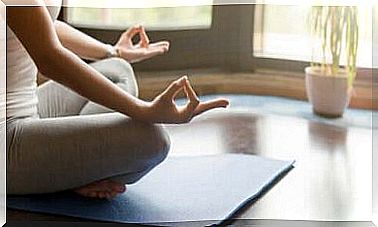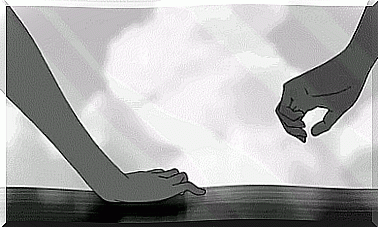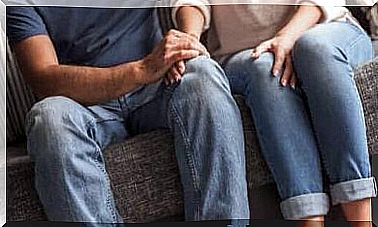What Is The Principle Of Least Effort?

The principle of least effort is about a truth that almost everyone knows purely by common sense. It means that when something can be done in different ways, the way that uses the least energy is always the best. Why? Because it is more efficient, so that we achieve the same result with less effort.
Efforts give more value, both objectively and subjectively, to projects. A gem has more value because it is scarcer and therefore it is necessary to make more effort to find it. A goal achieved is more valued if it means that we have overcome major obstacles. So in principle we can say that we agree that effort is a positive and important value.
Now greater effort does not always yield better results. We can do math by hand. Add, subtract and do all operations manually. But we can do the same thing on a computer in much less time and with fewer errors. The effort put in is therefore disproportionate to the results achieved. In the first case, we waste energy.
The principle of least effort does not try to avoid the difficulty, nor does it encourage us to choose only simple tasks. Rather, the emphasis is on finding ways to reduce the effort required to achieve a goal. Let’s look at this in more detail.

1. Barriers and the principle of least effort
The principle of least effort is to give up control and let everything come as it comes. Some may think it’s too relaxed or carefree, but it’s not. It is one thing to look for the easiest way and quite another to be negligent or irresponsible.
It is about taking a new stand on the obstacles. There are problems. We find them in almost all everyday tasks. Sometimes we make enormous efforts, but nevertheless things do not go as we expect. We feel overwhelmed by everything we have to do and it is getting harder and harder for us to find the willpower to do it.
An obsessive attitude to work quickly leads to stress and subsequently to a blockage. Then we struggle between our total resistance to keep working and the duty to do so. There is so much emotional energy that we use in battle that it takes all of our energy, and it still doesn’t give us the best results.
From there, it’s just one step to continued frustration. What we do is disproportionate to what we achieve. We have a hard time focusing on our obligations at work and eventually we get tired of it. Yet we must do our duty. That’s when the principle of least effort takes effect: productivity does not depend on the amount of energy we invest, but on the clarity and inspiration that guides our actions.

2. Inspiration and productivity
The principle of least effort states that easy things are basically good. It also states that less is more and that “good” is enough. In other words, the simplest ways, requiring less effort, are the best. There are also situations where less perfectionism can lead to better results.
There are many ways of doing things, but we are not always aware of them. Sometimes we don’t even have clarity about the method we use. We may do things as we have seen them do by others, or as someone has told us to do. But we no longer think about whether this is really the best way to achieve our goal.
The principle of least effort says that if you feel overwhelmed, blocked or tired by an activity, then don’t continue with it. Your body and mind are screaming to stop. You got to the point where you’re just mechanically doing the job, and you’re paying the price. By standing still, doing nothing or taking a break, you can change your mindset.
It’s time to do something that recharges your energy. Something that rewards you and allows you to find a different perspective. Then it’s up to you to think about how you handle your obligations. Is there an easier way to fulfill them? Are there any unnecessary steps you can omit? Think of five different ways to do the same thing. Evaluate them. Doubt them. Let your creativity run wild. Get inspired and you will see how you can come up with better and above all easier methods.

3. Your mind must find a way to flow
We agree that a fluent mind is more effective and saves a lot of effort. What we often don’t know is the way to get our minds flowing. According to the principle of least effort, we must meet five conditions for this to happen. It concerns the following:
- Try to complain less and don’t blame others.
- Don’t try to change a situation for no reason. Accept it and try to understand it.
- Try to observe your problem as if you were a stranger.
- Open your mind and be willing to take new options and new paths.
- Work on new answers and solutions until you see one that really motivates you to act.
Our stubborn resistance to accepting situations only blocks our flow. Complaining, blaming others and denying reality are forms of resistance. When you overcome your refusal to change mindsets, you take a decisive step that your mind needs to flow. This helps us to get inspired, with all its creative power.
4. Most importantly: enjoy yourself
When we enjoy what we do, we usually get better results. That is obvious. We put more energy into what arouses our attention and interest. It is a pleasure to devote ourselves to it. Time flies and we have no problem making an extra effort because everything is better. We flow.
Is there really a way to enjoy our obligations? We can turn any activity into a game. Let’s say we have to do something boring and mechanical, like transfer 500 tedious documents into a database. What if we try to compete with ourselves? We can measure the time it takes to complete one and compete against our previous records.

Science says one way to help us do tedious tasks is to work on them for 20 minutes. Then take a break. And then you do this again. Have you ever tried this? Do it and you will see that you make fewer mistakes.
In short, be flexible
Putting into practice the principle of least effort for the greatest possible return requires intelligence. Many of our activities are designed to be completed as quickly as possible. We rarely wonder if routine procedures with good results could be a more effective alternative.
Some of our “expensive” routines that cost us the most energy turn into a kind of straitjacket. They are not only decisive for our actions, but above all for our thinking. Without realizing it, we end up in a rigid mentality in which we feel trapped. That’s where the principle of least effort can help us choose more constructive and effective ways.
The value of this perspective is that it focuses on creativity and fun. We can also introduce habits that encourage us to be more imaginative and think more about our own well-being. Choosing the easiest way makes us better and allows us to achieve more remarkable results.









